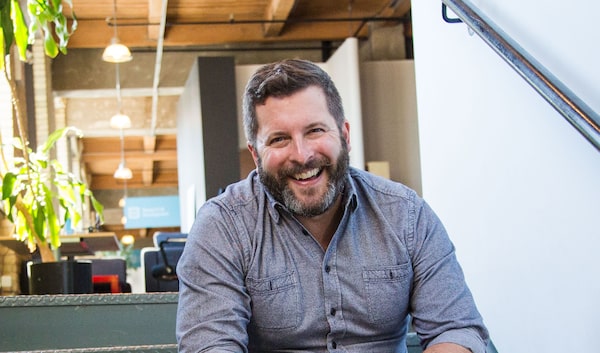At best, perks like foosball tables just become part of the scenery. Often they are only appealing to a subset of employees.James West/The Globe and Mail
There’s no shortage of people who want to work in in-demand business sectors. One of the challenges of running a company in one of those sectors is figuring out how to make sure all those smart, driven people want to work for you, specifically.
The material perks matter, but they can only take you so far. Unlike some of our tech-company peers, we never really jumped into the free meals, pinball machines and beer kegs version of what I sometimes call “chequebook employee engagement.” (Also known as, “Here’s your foosball table. Work harder.”)
At best, the perks just become part of the scenery. Often they are only appealing to a subset of employees. At worst, they gather dust or become annoying. I haven’t talked to an employee yet who said they turned down a competing job offer because we upgraded the Xbox. Once the material things become commonplace, it’s the intangible benefits that end up mattering most.
Where am I going?
People tend to plan out their career trajectories, but we’re starting to see employees who are more concerned about the narratives of their careers: How will this company add to my story? Is the company’s mission compelling? Is it well known? Does it connect with other work I’ve done? People want to know how their work is going to impact them, and how it’s going to help them make an impact. They want to feel like a company is helping them take shape, and that it’s making a positive change in the world – or at least, in their industry.
This gets infinitely more complicated when you realize that what constitutes meaning and impact is as individual as each employee. One person’s jam is building a startup with international reach and another’s is making sure their family has plenty of time, space and food to grow.
Each company needs to decide for itself what sorts of people it wants to attract, but I’m of the firm belief that the best kinds of organizations will find ways to encompass multitudes. Contrary to popular opinion, what an employee wants out of a job doesn’t affect how good they are going to be at it. If you can help them get what they want, chances are they are going to give their best efforts.
It takes a village to sell an e-book
At our company, we need a lot of people who can write code and design hardware. We also need people who know books and authors and what readers like. Those skills don’t often overlap, and that’s okay. We need space for both.
Creating space for wildly different types of talent isn’t easy, but, as a company straddling the tech and book worlds, Kobo has found ways to group people with disparate skills together while still giving them room to be themselves. Our business just doesn’t work if none of our software engineers know what readers want out of an e-book, or if the people selecting books don’t know the strengths and limits of a mobile platform.
The solution, for us anyway, has always been about empathy. We don’t just tell our staff to put themselves in other people’s shoes; we have them walk around to try them on for size. We bring in authors, designers and editors to give engineers a glimpse of the book world, and we hold weekly open workshops and presentations to show what’s going on under the hood of our platforms or in our research. It’s all about giving our people repeated little windows into worlds of work that aren’t their own, together with a sense of why those other disciplines are exciting, interesting or valuable.
While learning about what employees need to do their jobs well, we’ve learned even more about what they want out of their jobs. Whether it’s a cascading series of mentorships to help an intern get on a path to a great career, or building in the kind of flexibility that a working parent needs to hit their deadlines and get dinner on the table, we can adapt to what our employees want. (And we can give the ones who aren’t sure what they want enough options so they can figure it out.)
Our most effective programs haven’t been our most expensive ones. Mostly they have only cost us the effort of getting them organized. And almost all of them have been about connecting with, and learning from, each other.
The nice thing about these programs is that they expand the possibilities for potential employees. But even better, especially from a talent-attraction perspective, is that when it comes to employee experience, word gets around. Over time, everyone finds out which companies are great to work for and which ones are forced marches. And being one of the good ones becomes a powerful calling card when recruiting. If there’s one other thing we’ve found, it’s that if you take care of the people who already work for you, it will always be easier to find more people who want to join the team.

Michael Tamblyn.Supplied
Michael Tamblyn is the CEO of Rakuten Kobo. He is the leadership lab columnist for September, 2021. This column is part of Globe Careers’ Leadership Lab series, where executives and experts share their views and advice about the world of work. Find all Leadership Lab stories at tgam.ca/leadershiplab and guidelines for how to contribute to the column here.
Stay ahead in your career. We have a weekly Careers newsletter to give you guidance and tips on career management, leadership, business education and more. Sign up today or follow us at @Globe_Careers.